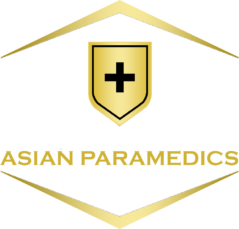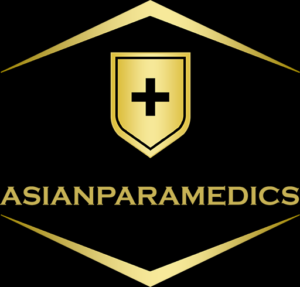Biology Multiple Choice Questions
- Which of the following disorders is not suitable for population carrier screening?
- a) Cystic fibrosis
- b) Oculocutaneous albinism
- c) Sickle cell disease
- d) Tay-Sachs disease ✅
- Male to male transmission is a key feature of which pattern of inheritance?
- a) Autosomal dominant
- b) Autosomal recessive
- c) X-linked dominant ✅
- d) X-linked recessive
- Consanguinity shows a strong association with which pattern of inheritance?
- a) Autosomal dominant
- b) Autosomal recessive ✅
- c) X-linked dominant
- d) X-linked recessive
- Which of the following disorders does not show X-linked inheritance?
- a) Duchenne muscular dystrophy
- b) Tay-Sachs disease ✅
- c) Haemophilia A
- d) Haemophilia B
- Which of the following would result in Angelman syndrome?
- a) Maternal UPD 15
- b) Paternal UPD 15 ✅
- c) Deletion in the paternally derived chromosome 15
- d) A mutation in the SNRPN promoter
- Leber’s hereditary optic atrophy is caused by a mutation in:
- a) chromosome 12.
- b) chromosome 18.
- c) chromosome 21.
- d) mitochondrial DNA. ✅
- Why didn’t Mendel find linkage?
- 1. Some genes were linked, but they were too close together to crossover.
- 2. All seven genes were on separate chromosomes. ✅
- 3. Mendel did detect linkage. He discovered this genetic phenomenon.
- 4. He didn’t execute his crosses correctly, so linkage went undetected.
- 5. Some genes were linked, but they were too far apart for crossing over to be distinguished from independent assortment, or linked genes were never tested for at the same time in the same cross.
- Given what is known about single, double, and noncrossovers in a three-point map, triple crossovers in a four-point map can be predicted to be __________.
- 1. more frequent than single crossovers
- 2. more frequent than noncrossovers
- 3. more frequent than double crossovers
- 4. less frequent than single crossovers, but more frequent than double crossovers
- 5. less frequent than all of the above ✅
- The mutations blistered (bs) and clot (cl) are located on opposite ends of chromosome II in Drosophila. A blistered female is crossed with a clot male. The F1 female is then backcrossed to a blistered clot male. What ratio will be expected in the offspring of the backcross?
- 1. 9/16 wild: 3/16 blistered: 3/16 clot: 1/16 blistered, clot
- 2. 1/2 blistered: 1/2 clot
- 3. 2/24 wild: 1/4 blistered: 1/4 clot
- 4. 1/4 wild: 1/4 clot: 1/4 blistered: 1/4 blistered, clot ✅
- 5. 4/10 blistered: 4/10 clot: 1/10 wild: 1/10 blistered, clot
- Genes A and B are farther apart than are genes A and C, and all three are linked. What CANNOT be concluded?
- 1. B might be between A and C.
- 2. C might be between A and B.
- 3. A might be between B and C.
- 4. More crossovers will occur between A and B than between A and C.
- 5. All four statements may be true. ✅
- Interference in genetics is __________.
- 1. the masking of one gene’s phenotype, due to the expression of another gene
- 2. the phenomenon observed when one recombination event on a chromosome inhibits other closely linked recombination events ✅
- 3. used in “mapping the centromere”
- 4. used in synteny testing
- LOD scores are used to predict __________.
- 1. crossover frequency
- 2. gene sequence
- 3. gene linkage ✅
- 4. the number of chromosomes in a genome
- 5. the number of genes involved in the expression of a given trait
- If you have three genes (A, B, and C) linked on the same chromosome, how can you determine the gene order?
- 1. Look for double crossover phenotypes involving the wild type and mutant alleles of genes A, B, and C. ✅
- 2. Look for single crossover phenotypes involving the wild type and mutant alleles of genes A, B, and C.
- 3. Look for parental phenotypes.
- 4. You cannot determine gene order by looking at the results of a cross.
- Which of the following is NOT directly related to linkage groups?
- 1. a group of genes found on the same chromosome
- 2. members of the same family expressing the same trait ✅
- 3. LOD scores
- 4. the number of haploid chromosomes in an organism’s genome
- Best way to differentiate between homocystinuria and Marfan syndrome?
- a. lens ectopia
- b. long arms
- c. autosomal dominant
- d. lack of thrombosis
- e. mental retardation ✅
- Which DNA screening test is the most useful?
- a) CFTR
- b) Prenatal determination of gender
- c) Screening Mediterranean people for thalassaemia
- d) Familial adenomatous polyposis coli ✅
- Prior to genetic testing for Huntington’s disease, which of the following must be performed first?
- a) Examination
- b) History taking
- c) CT head
- d) EEG
- e) Genetic counseling ✅
- What best describes microsatellites?
- a) Areas of genomic instability
- b) Tandem repeats of up to six base pairs ✅
- c) RFLPs
- Which is the most common laboratory finding in (-thalassaemia carrier (trait)?
- a) Mild microcytic anaemia ✅
- b) Gene deletion
- c) Point mutation
- d) Translocation
- e) Macrocytic anaemia
- In which of the following is the most commonly identified hereditary defect leading to the development of diabetes?
- a) Glucose transporter
- b) Glucokinase gene ✅
- c) Insulin receptor
- d) Insulin
- DNA imprinting is best described by:
- a) Effect of parental gender gene origin on transmission of disease ✅
- b) Differential methylation of other allele
- c) Altered DNA promoter region
- d) (Maternal option)
- e) (Paternal option)
- Some psychiatric disorders such as schizophrenia are thought to have a genetic basis. The strongest supportive evidence for this is:
- a) HLA association
- b) Monozygotic concordance ✅
- c) Dizygotic concordance
- d) Family clustering
- Which of the following is less likely to be found in an example of an X-linked genetic disorder such as haemophilia?
- a) male to male transmission
- b) female to female transmission ✅
- c) consanguinity
- d) skipping of generations
- e) germinal mosaicism
- Potential problems in the RFLP analysis
- a) non-paternity
- b) cross over between linked genes – non-predictable
- c) not knowing the exact base sequence of the gene (i.e., DNA sequence)
- d) need family study
- e) need to know gene is causative (?need to know causative gene) ✅
- A child has a rare autosomal recessive condition but only 1 parent is found to be a carrier. This can be explained by
- a) uniparental disomy
- b) non-paternity
- c) germline mosaicism ✅
- d) mitochondrial inheritance
- e) incomplete penetrance

